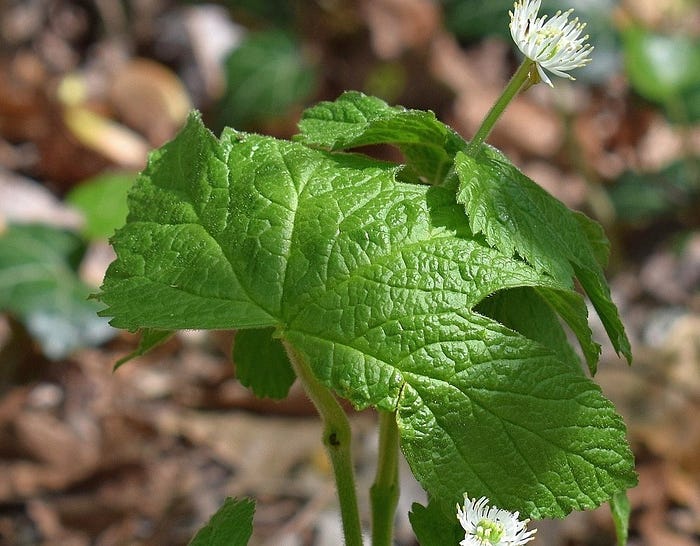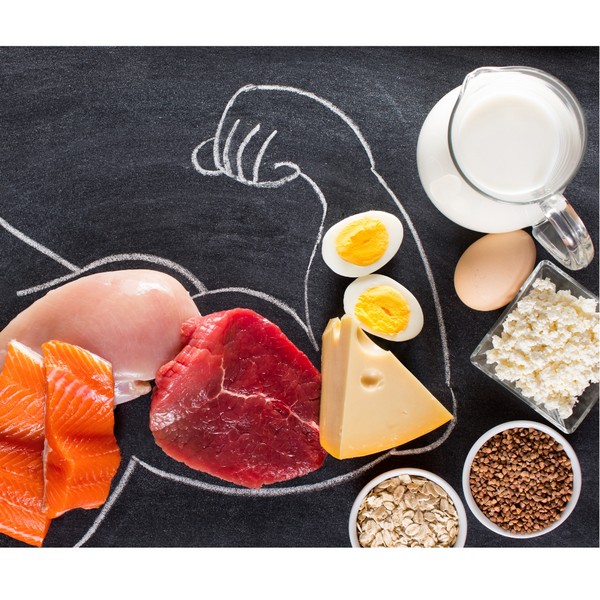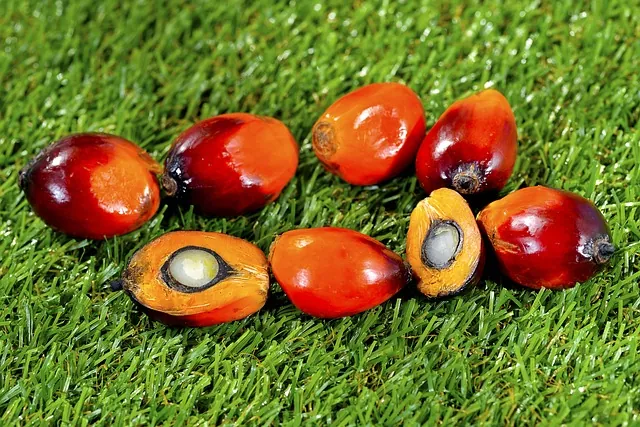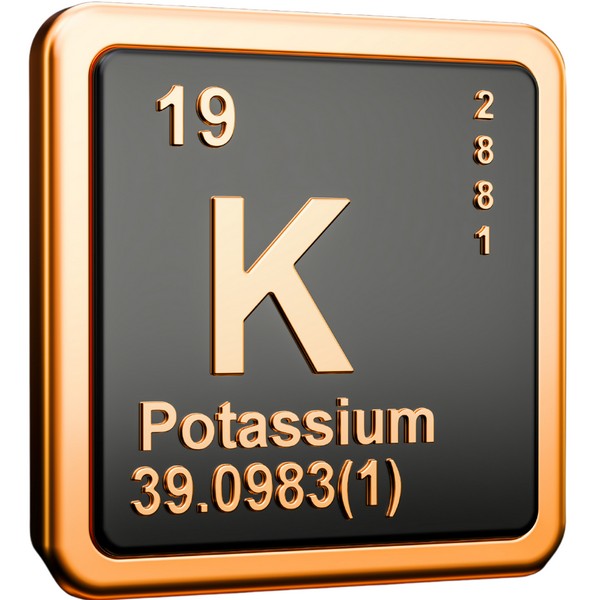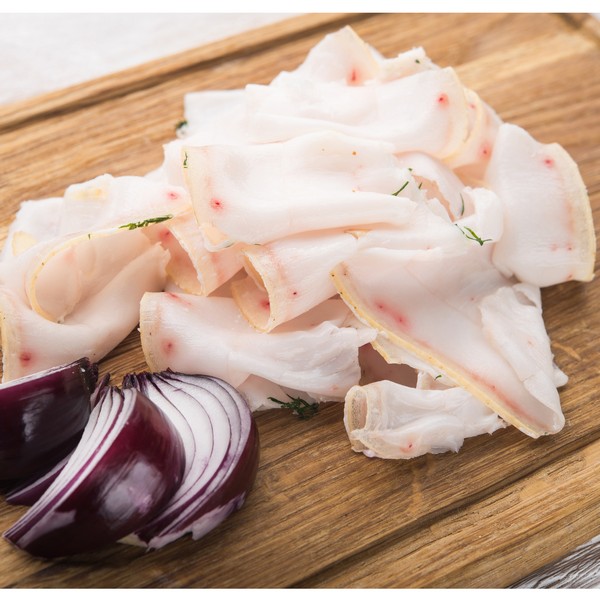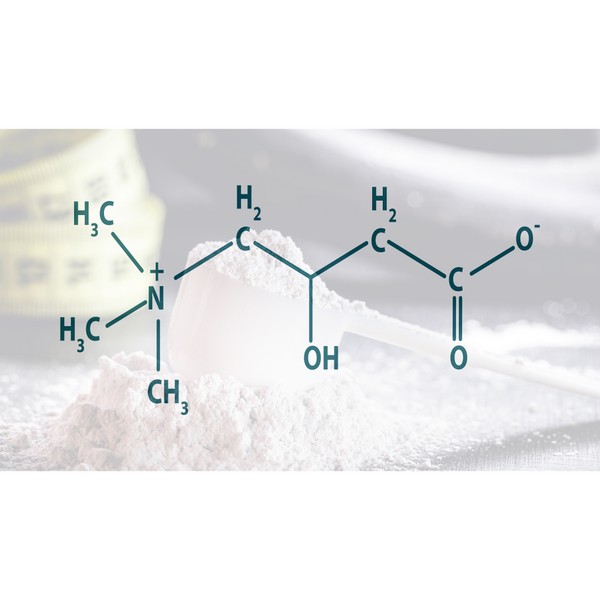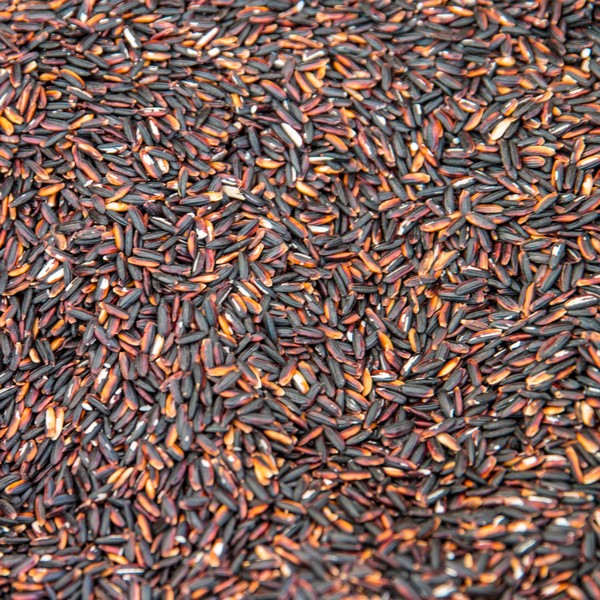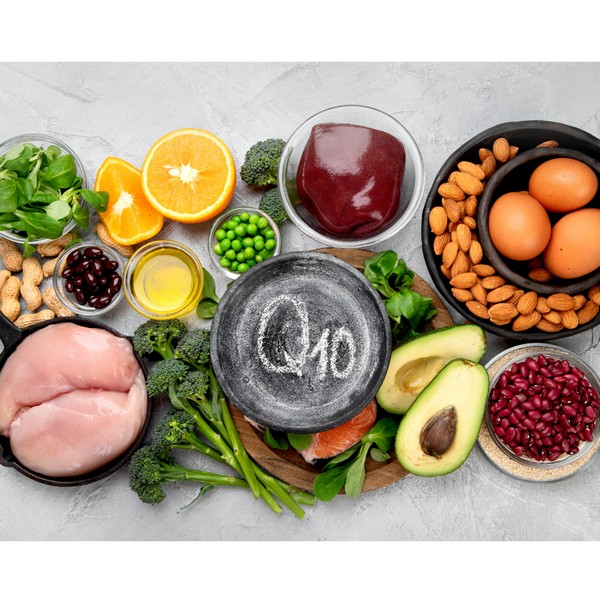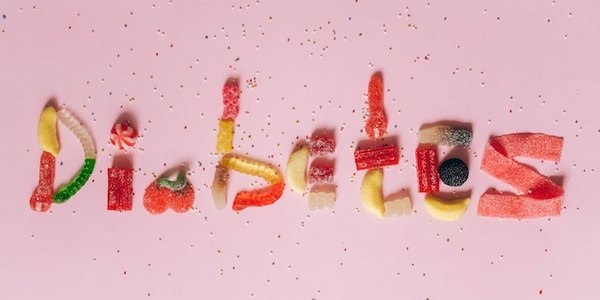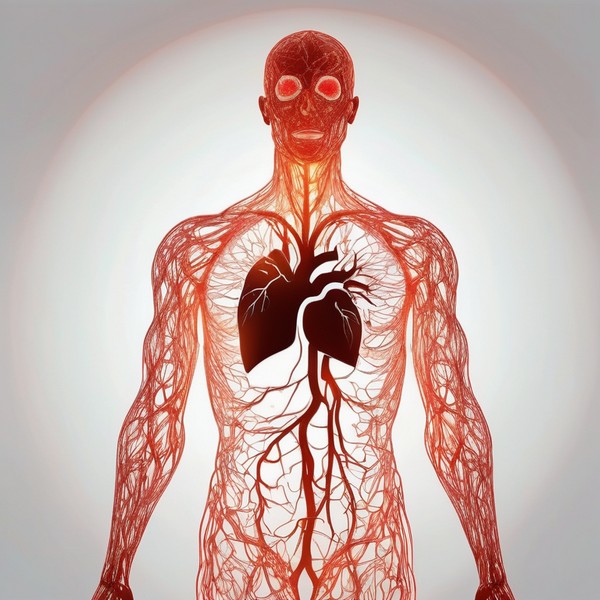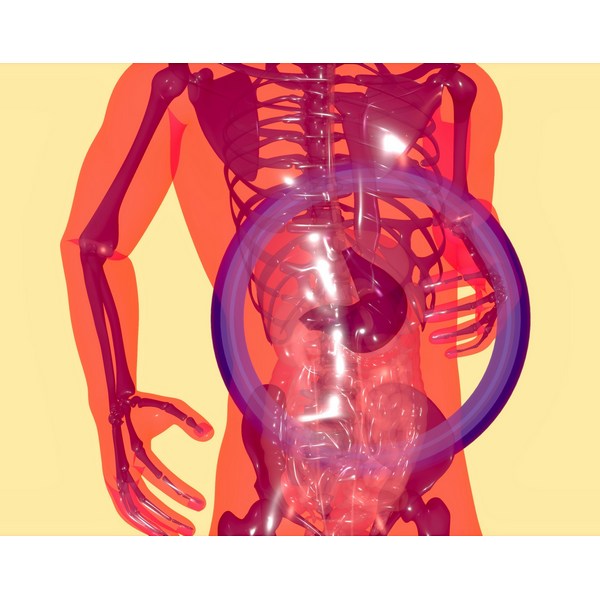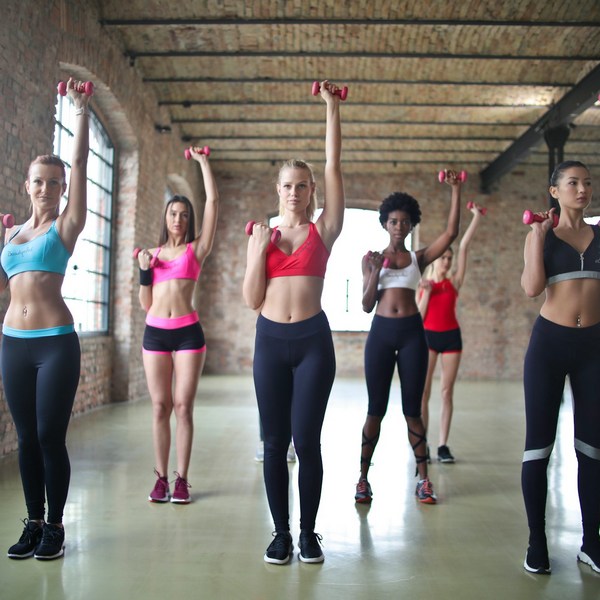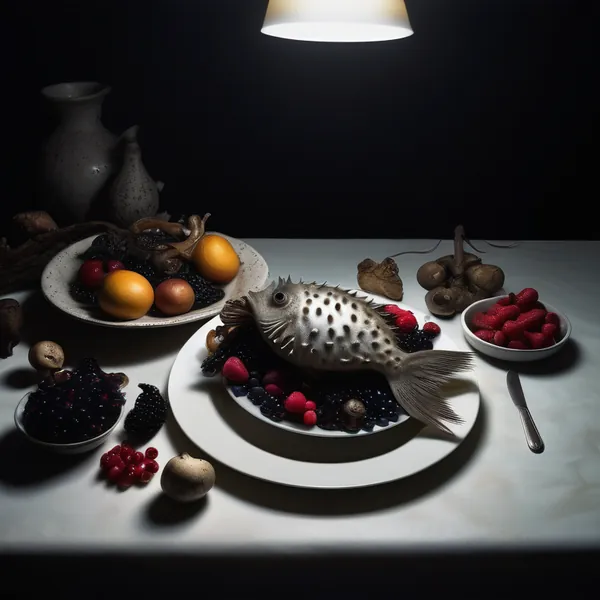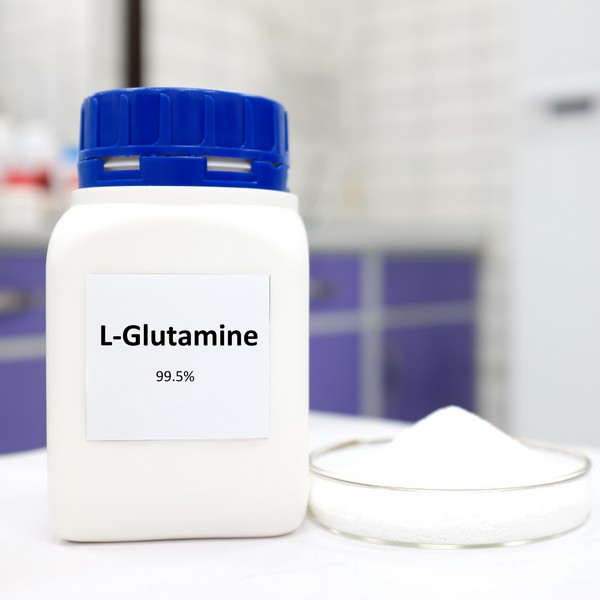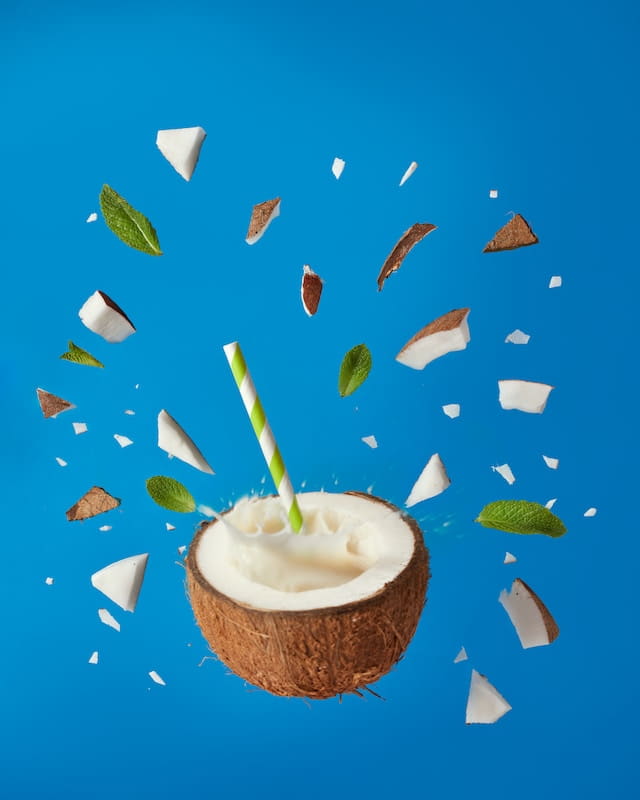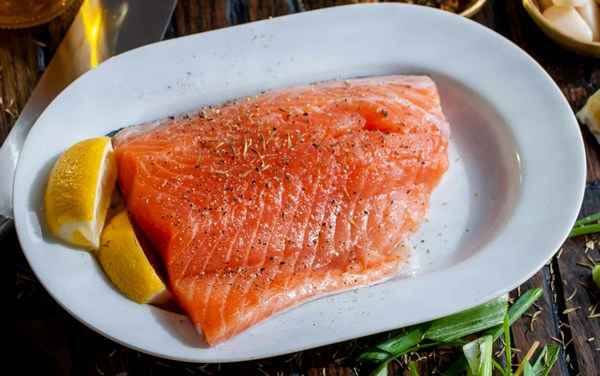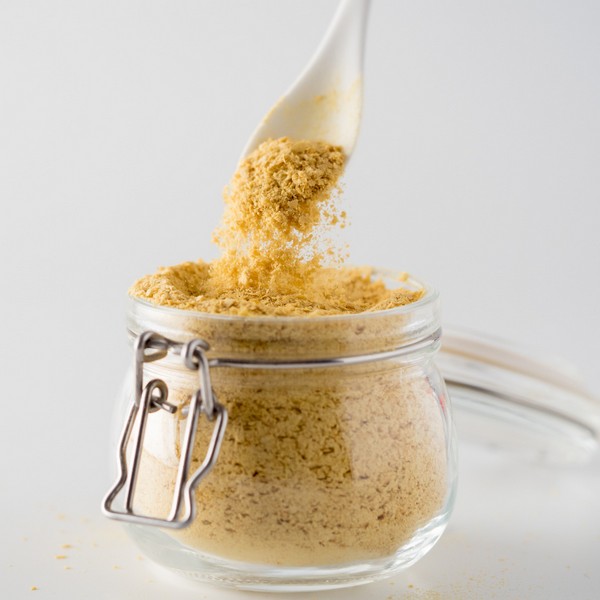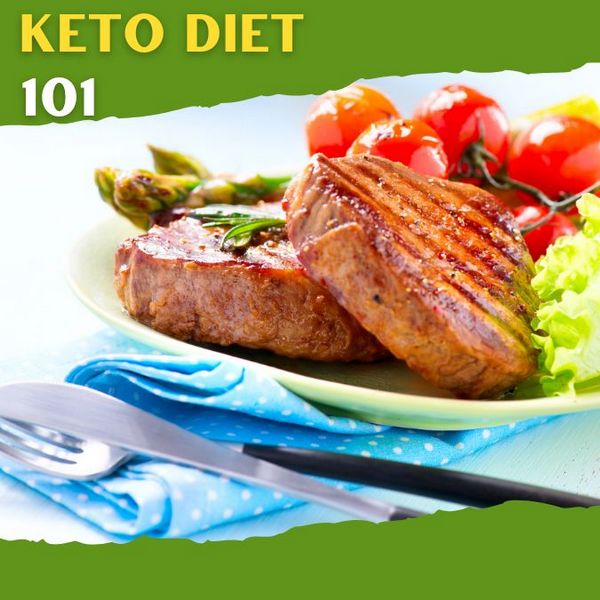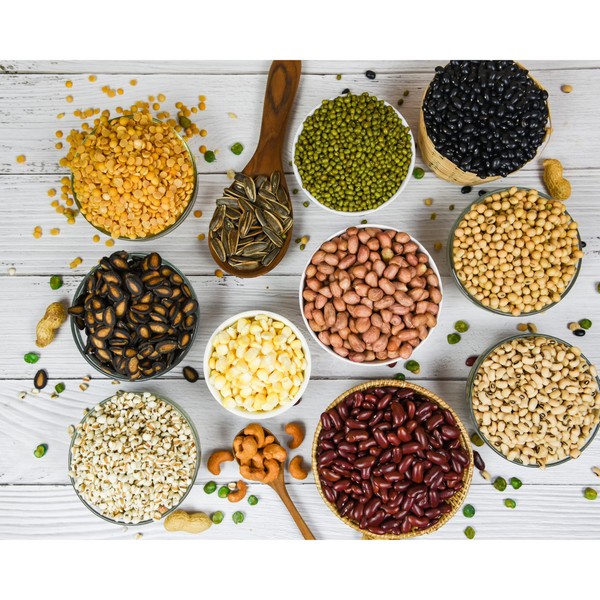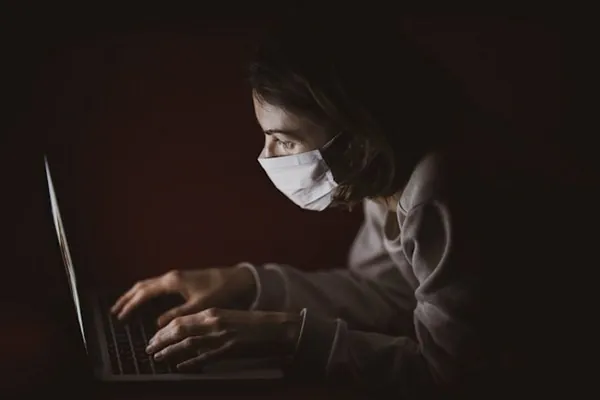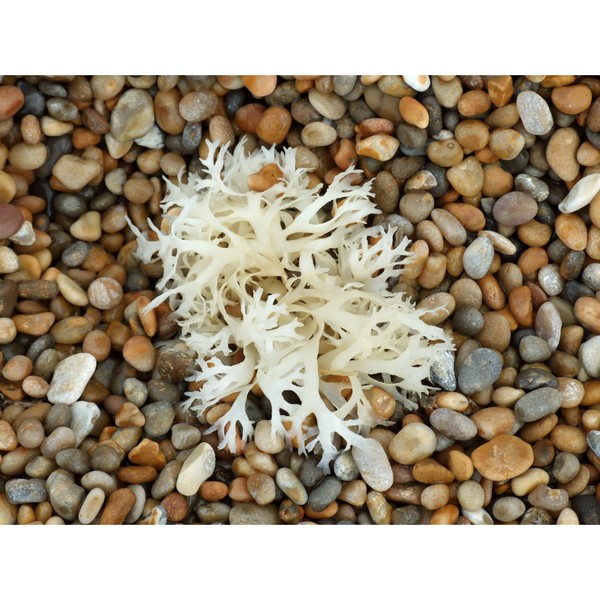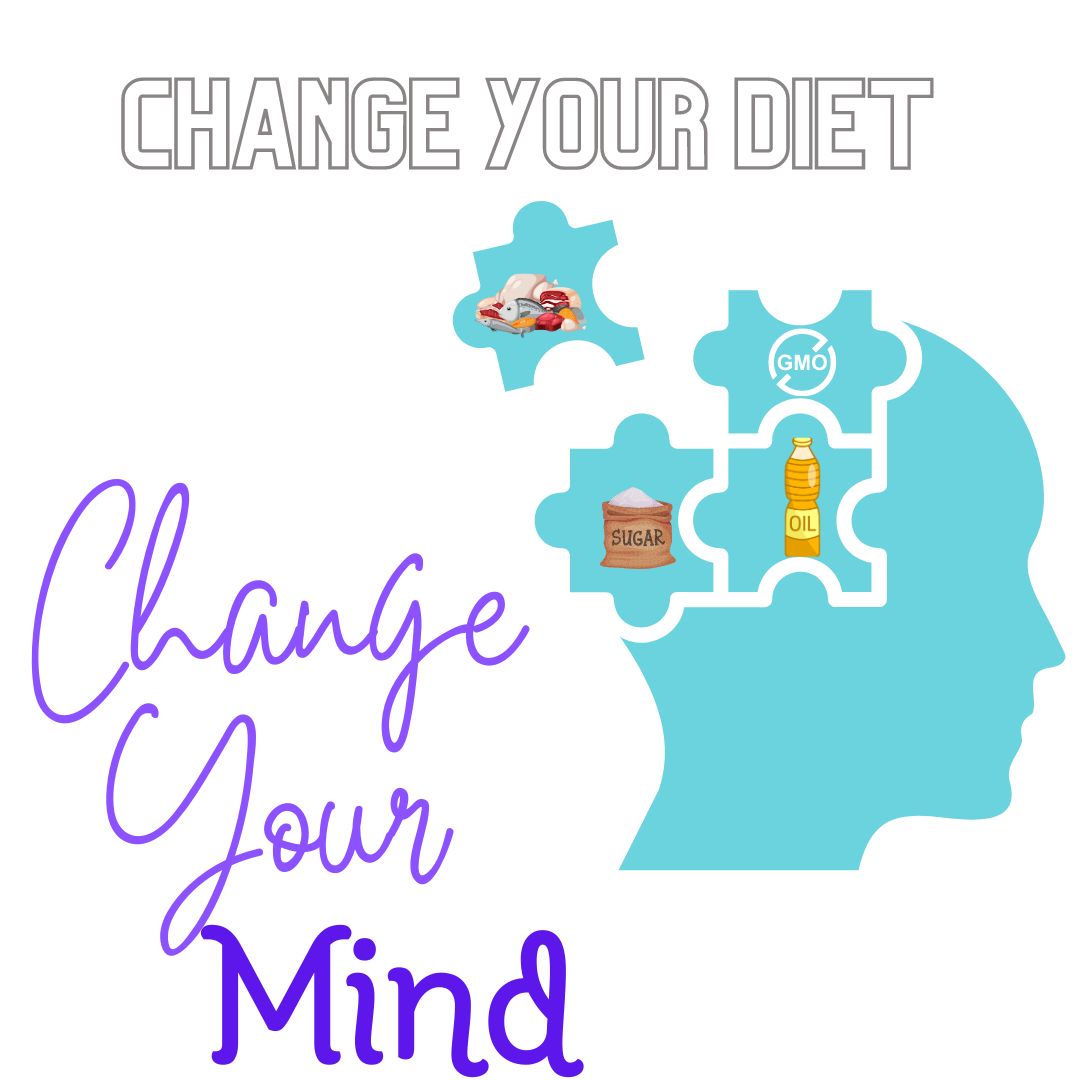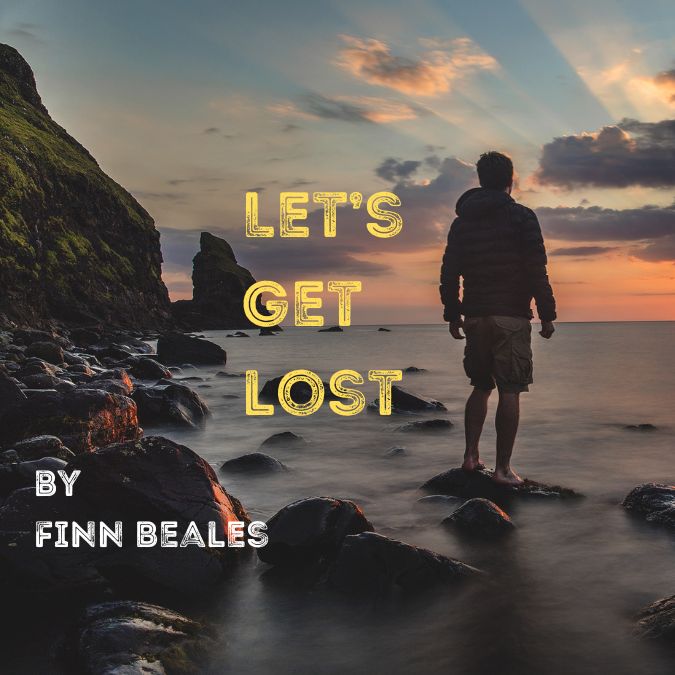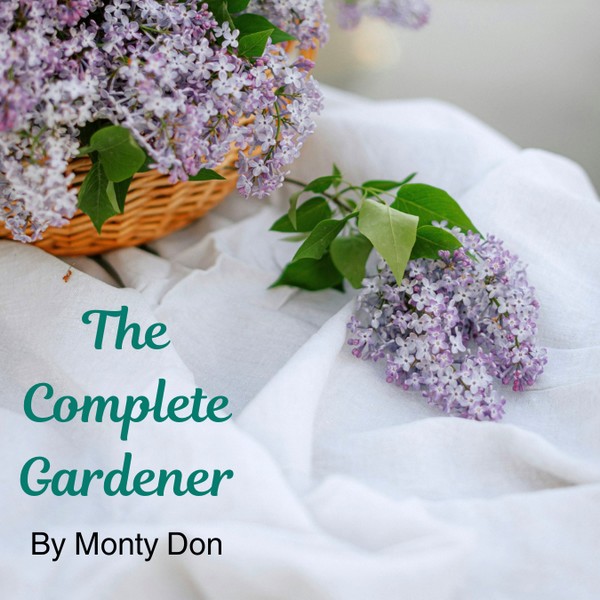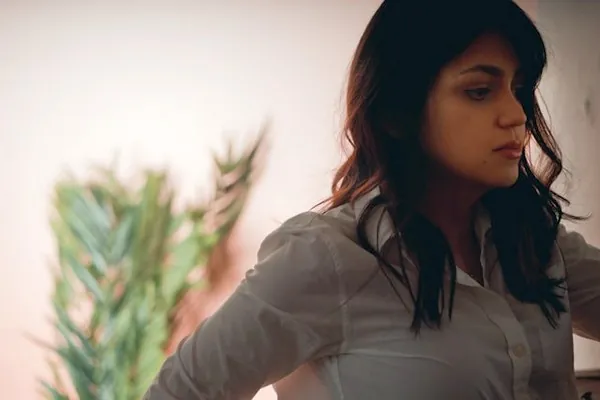Key Highlights
- Fugu, or pufferfish, is one of the most poisonous foods in the world, with its organs containing a neurotoxin that can paralyze motor nerves and cause respiratory arrest.
- Ackee fruit, the national fruit of Jamaica, can be deadly if eaten before it is fully ripe and the toxic parts are removed.
- Hákarl, a traditional Icelandic dish made from fermented Greenland shark meat, can cause extreme intoxication and even death if not prepared correctly.
- Cassava, a tropical root crop, can produce deadly cyanide if not cooked properly, making it important to follow safe preparation guidelines.
Table of Contents
Revealing the 10 Most Dangerous Foods
Food isn’t just about nourishment and pleasure; some can be downright hazardous if mishandled. From exotic bites to everyday items, certain foods carry risks of severe sickness or even fatality.
Safety in food preparation is key to dodging health threats from bacteria or toxins. Some edibles demand special attention to prevent dangerous outcomes, including poisoning, cyanide, or neurotoxins.
There are numerous foods around the world that require extreme caution and precision during preparation to avoid causing severe illness or death. From deadly neurotoxins to high levels of cyanide, these foods possess hidden dangers that can be life-threatening if not handled properly.
Awareness and proper handling of these risky foods are essential in minimizing foodborne illnesses and serious health issues.
1. Fugu (Pufferfish)

Fugu, also known as pufferfish, is considered one of the most dangerous foods in the world. The ovaries, intestines, and liver of the fugu contain tetrodotoxin, a neurotoxin that is up to 1,200 times more deadly than cyanide.
A lethal dose of this toxin is smaller than the head of a pin, and a single fugu fish has enough poison to kill 30 people. Japanese chefs must undergo years of training to obtain a fugu-preparing license.
Despite these precautions, numerous people die every year from improperly prepared fugu. The neurotoxin in fugu can paralyze motor nerves and cause fatal respiratory arrest.
Exercise extreme caution when consuming fugu to ensure it has been prepared correctly by a licensed chef.
2. Ackee Fruit
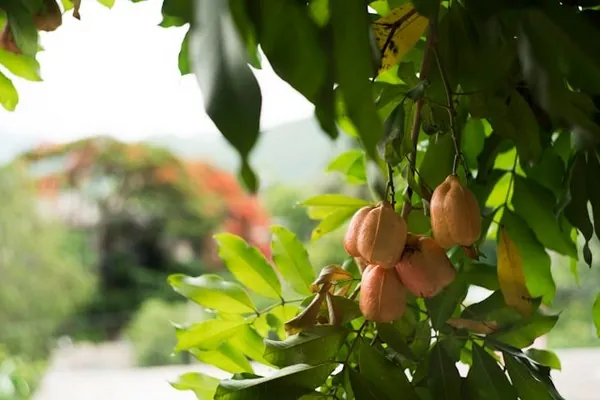
The ackee fruit, the national fruit of Jamaica, is a delicious but dangerous treat if not prepared properly. Unripe ackee contains a poison called hypoglycin A, which can disrupt blood glucose production and increase the risk of hypoglycemia.
To safely consume ackee fruit, it must be fully ripe and allowed to open naturally on the tree, at which point the seams on the outside of the fruit will split wide open.
Only the cream-colored, fleshy pulp around the seeds should be eaten, while the pink flesh and black seeds should be avoided as they are highly toxic.
Improper preparation of ackee fruit can cause serious illness, known as the “Jamaican vomiting sickness,” which can lead to coma or death.
It is essential to only consume ackee fruit that has been properly ripened and prepared to mitigate the risks associated with this dangerous food.
3. Cassava
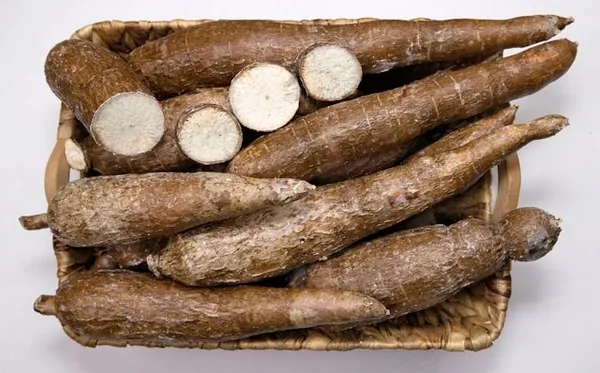
Cassava, a tropical root crop, is commonly used to make various culinary delights such as tapioca pudding, juice, cakes, and chips. However, if cassava is not properly prepared, it can produce deadly cyanide.
Cassava is classified into two main types: sweet and bitter. Sweet cassava contains low levels of cyanogenic glycosides and only requires cooking to reduce the cyanide content to non-toxic levels.
On the other hand, bitter cassava contains higher levels of toxins and must be grated, soaked, and cooked properly before consumption. Follow safe preparation guidelines to prevent poisoning from cassava.
The Canadian Food Inspection Agency (CFIA) provides guidelines for preparing cassava safely, and it is important to adhere to these guidelines to reduce the risks associated with this potentially dangerous food.
4. Rhubarb Leaves
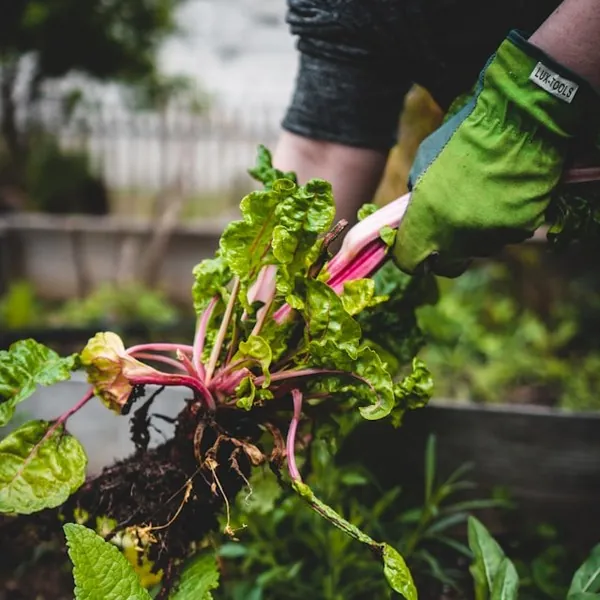
While rhubarb stalks are commonly used in jams and pies, it is important to exercise caution when handling rhubarb leaves. The leaves of the rhubarb plant contain oxalic acid, which can be fatal if consumed in large quantities.
Although it would take a significant amount of rhubarb leaves (approximately 11 pounds) to cause death, consuming small amounts of improperly prepared foods containing oxalic acid can lead to uncomfortable symptoms such as a burning sensation in the mouth and throat, nausea, diarrhea, eye pain, difficulty breathing, and red urine.
Oxalic acid can also contribute to the formation of kidney stones, which are known for causing severe pain, cloudy, red, or foul-smelling urine, fever, and chills.
To ensure safe consumption, it is essential to avoid using rhubarb leaves in cooking or baking and only utilize the edible stalks for culinary purposes.
5. Red Kidney Beans (Raw)
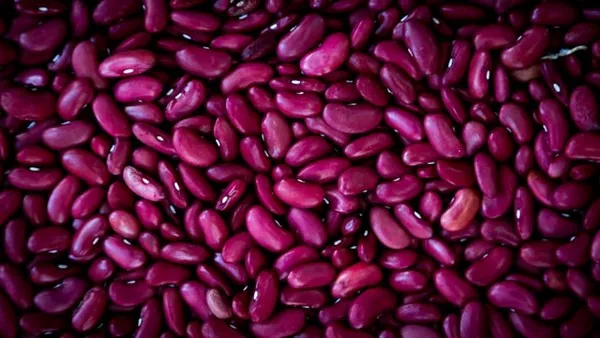
Red kidney beans, a popular pantry staple, provide plant-based protein, fiber, and essential vitamins and minerals. However, in their raw or undercooked form, red kidney beans contain a toxic variety of lectin called phytohaemagglutinin.
Consumption of phytohaemagglutinin can damage the gut wall and inhibit proper nutrient absorption, leading to symptoms such as diarrhea, abdominal pain, vomiting, and headaches.
To ensure safe consumption of red kidney beans, they must be soaked for a number of hours and boiled for at least 10 minutes. Note that cooking dried red kidney beans for less than 10 minutes at any temperature less than boiling can actually increase the toxicity five-fold, making them more toxic than if consumed raw.
Proper preparation is key to mitigating the risks associated with this potentially dangerous food.
6. Almonds (Bitter Varieties) and Cashews
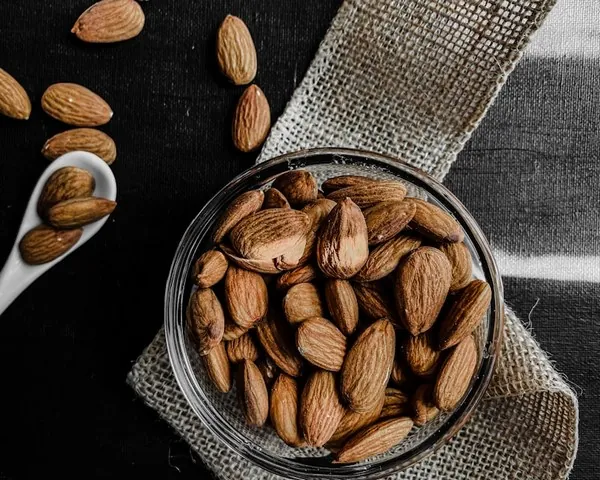
While almonds and cashews are typically considered healthy snacks, it is important to exercise caution when consuming bitter varieties of these nuts.
Bitter almonds contain cyanide and must undergo a full heat treatment to remove toxins before they can be safely consumed.
The cyanide content in bitter almonds is enough to cause serious harm or even death if consumed in large quantities.
However, it is important to note that the almonds and cashews available in stores have been properly processed and are safe to consume. Avoid consuming raw bitter almonds or any other foods containing unprocessed bitter almonds to prevent the risks associated with cyanide poisoning.
7. Margarine
Margarine, a common substitute for butter, has been a controversial topic in the world of nutrition due to its high content of trans fats. Trans fats are known to increase the risk of various health issues, including high blood pressure.
While margarine serves as a convenient alternative for those who follow a plant-based or dairy-free diet, it is important to choose varieties that are free from trans fats.
Reading labels and opting for more natural fats can help mitigate the risks associated with consuming this potentially dangerous food. As with most food, moderation is key, and it is important to prioritize a balanced diet that includes a variety of healthy fats from sources such as butter and tallow.
8. Microwave Popcorn

Microwave popcorn is a popular snack option due to its convenience and delicious taste. However, it is important to be aware of the potential dangers associated with microwave popcorn.
Some brands of microwave popcorn contain a chemical compound called diacetyl, which has been linked to respiratory issues when inhaled in large quantities.
Prolonged exposure to diacetyl has been associated with a condition known as “popcorn lung,” which causes inflammation and scarring of the airways.
To minimize the risks associated with microwave popcorn, it is recommended to opt for brands that do not contain diacetyl or to enjoy freshly popped popcorn using a stovetop or air popper.
9. Alfalfa sprouts & Bean Sprouts
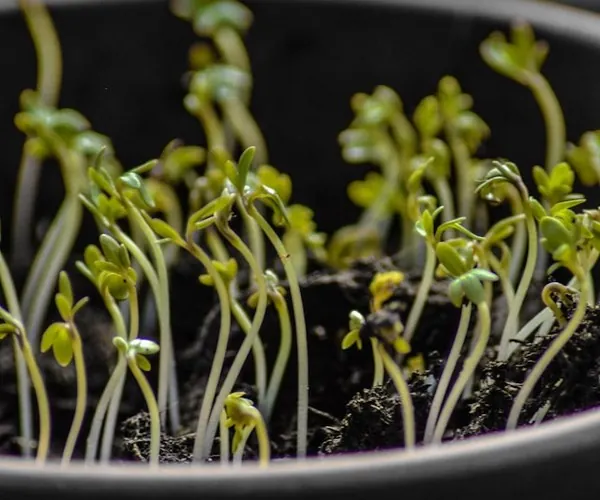
Alfalfa sprouts and bean sprouts are commonly used in salads, sandwiches, and stir-fries for their crisp texture and nutritional value. However, these sprouts have been associated with numerous food poisoning outbreaks due to their ideal environment for bacterial growth.
Alfalfa sprouts and bean sprouts can be contaminated with bacteria such as Salmonella and E. coli, which can cause severe illness if consumed.
Individuals with weakened immune systems, the elderly, pregnant women, and young children are particularly susceptible to the risks associated with consuming raw sprouts.
To minimize the risks, it is recommended to thoroughly wash and cook sprouts before consuming them, or opt for cooked sprouts instead.
10. Stone Fruit Seeds and Apple Seeds
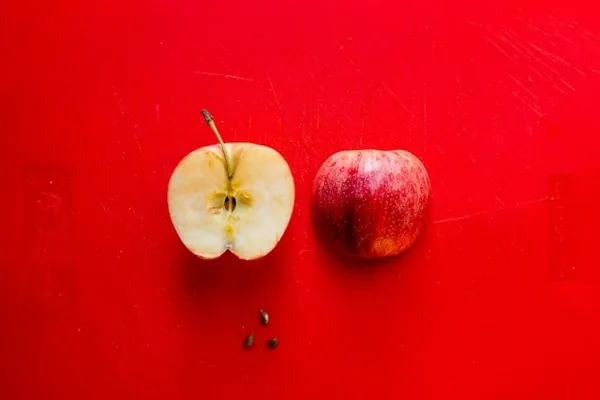
Stone fruits such as cherries, peaches, plums, and apricots, as well as apple seeds, contain small amounts of cyanide-producing glycosides. While the cyanide content in these seeds is not typically harmful in small quantities, consuming large amounts can lead to cyanide poisoning.
Avoid chewing on cherry seeds or pits, and to be cautious when consuming stone fruits and apple seeds.
The best practice is to avoid eating the seeds altogether or to ensure that they are removed before consuming the fruit.
Conclusion
In conclusion, being aware of the potential risks associated with certain foods can help you make informed choices to safeguard your health. Proper preparation and understanding the risks involved can significantly reduce the likelihood of encountering any harm from consuming these dangerous foods. Remember, when it comes to your well-being, knowledge is key. Stay informed, practice caution, and prioritize your health above all else.
Frequently Asked Questions
How Can Proper Preparation Reduce Risks?
Proper preparation, such as cooking, soaking, or ripening, can reduce the risks associated with these dangerous foods. Following safe preparation techniques and guidelines provided by food safety organizations can help ensure safe consumption and minimize the potential dangers.
Are There Any Safe Alternatives to These Foods?
Yes, there are safe alternatives to these dangerous foods. It is important to explore alternative options that offer similar flavors or textures without the associated risks. There are many delicious and nutritious options available that can provide a safe and enjoyable culinary experience.
Can Children Consume Any of These Foods Safely?
Children should exercise caution when consuming these dangerous foods. It is important to consider the specific risks associated with each food and to follow safe preparation guidelines to ensure the safety of children. Consulting with a pediatrician or nutritionist can provide additional guidance on safe consumption for children.
What Are the Signs of Poisoning from These Foods?
The signs of poisoning from these dangerous foods can vary depending on the specific food and the individual’s reaction. Common signs may include difficulty breathing, rapid breathing, nausea, vomiting, abdominal pain, or other symptoms associated with food poisoning. It is important to seek medical attention if poisoning is suspected.
How Common Are Incidents Related to Dangerous Foods?
Incidents related to dangerous foods can vary in frequency depending on various factors such as cultural practices, food safety regulations, and individual awareness. While specific data may vary, food poisoning incidents related to these dangerous foods are reported worldwide and can lead to serious illness or even death if not addressed promptly.
Is It Legal to Sell All These Foods Globally?
The legality of selling these dangerous foods can vary depending on the country and its regulations. Global regulations exist to ensure food safety and prevent the sale of potentially harmful foods. It is important to comply with local regulations and guidelines when selling or consuming these foods.
What Immediate Actions Should Be Taken in Case of Poisoning?
In case of poisoning from these dangerous foods, it is important to seek immediate medical attention. Call emergency services or contact a local poison control center for guidance. Do not induce vomiting unless directed by a medical professional. Prompt medical intervention is crucial in cases of poisoning to prevent complications such as respiratory paralysis.
Can Any of These Foods Be Made Completely Safe?
While proper preparation can significantly reduce the risks associated with these dangerous foods, it is important to note that no food can be made completely safe if not handled properly. Following safe food preparation guidelines and practices can help mitigate the risks, but it is essential to exercise caution and awareness when consuming any potentially dangerous food.
Are There Any Health Benefits to Consuming These Foods?
While these dangerous foods may pose risks if not handled properly, they can also offer nutritional value and potential health benefits when consumed safely. For example, fruits such as ackee and stone fruits provide vitamins and antioxidants. However, it is essential to prioritize safe handling and preparation to ensure the health benefits outweigh the risks.
How Do These Foods Compare to Other Dangerous Foods Not Listed?
These dangerous foods are among the most well-known and frequently discussed in terms of potential risks. However, there are other dangerous foods not mentioned in this list that also pose risks if not handled or prepared correctly. Risk assessment and awareness of safe food handling practices are crucial when considering any potentially dangerous food.
What Role Do Cooking Methods Play in Mitigating Risks?
Cooking methods play a significant role in mitigating the risks associated with these dangerous foods. Proper cooking techniques, such as boiling, grating, or soaking, can reduce the levels of toxins or poisonous compounds, making the food safer for consumption. It is important to follow safe cooking methods to ensure food safety.
Are There Any Documented Survival Stories After Consuming These Foods?
While there may be documented survival stories of individuals who have consumed these dangerous foods, it is important to note that severe illness or complications can occur. Surviving consumption of these foods does not eliminate the risks or potential harmful effects. Safe handling and preparation should always be the priority to minimize the risks associated with these dangerous foods.
What Are Some Common Myths About These Foods?
There may be common myths or misinformation surrounding these dangerous foods. It is important to rely on reliable sources of information such as food safety organizations or reputable experts to dispel any false claims or misconceptions. Educating oneself about the risks and safe handling practices is crucial to ensure food safety.
Research
Abraham, K., Buhrke, T. and Lampen, A., 2016. Bioavailability of cyanide after consumption of a single meal of foods containing high levels of cyanogenic glycosides: a crossover study in humans. Archives of Toxicology, 90, pp.559-574.
https://pubmed.ncbi.nlm.nih.gov/25708890/
Blake, O.A., Bennink, M.R. and Jackson, J.C., 2006. Ackee (Blighia sapida) hypoglycin A toxicity: Dose response assessment in laboratory rats. Food and chemical toxicology, 44(2), pp.207-213.
https://pubmed.ncbi.nlm.nih.gov/16099087/
Booyens, J. and Louwrens, C.C. and Katzeff, I.E., 1988. The role of unnatural dietary trans and cis unsaturated fatty acids in the epidemiology of coronary artery disease. Medical Hypotheses, [online] 25(3), pp.175–182. https://pubmed.ncbi.nlm.nih.gov/3367809/
BROWN, M., Bates, R.P., McGowan, C. and Cornell, J.A., 1991. Influence of fruit maturity on the hypoglycin A level in ackee (Blighia sapida) 1. Journal of food safety, 12(2), pp.167-177.
Bolarinwa, I.F., Orfila, C. and Morgan, M.R., 2014. Amygdalin content of seeds, kernels and food products commercially-available in the UK. Food chemistry, 152, pp.133-139.
Cereda, M.P. and Mattos, M.C.Y., 1996. Linamarin: the toxic compound of cassava. Journal of Venomous Animals and Toxins, 2, pp.06-12.
Chaouali, N., Gana, I., Dorra, A., Khelifi, F., Nouioui, A., Masri, W., Belwaer, I., Ghorbel, H. and Hedhili, A., 2013. Potential toxic levels of cyanide in almonds (Prunus amygdalus), apricot kernels (Prunus armeniaca), and almond syrup. International Scholarly Research Notices, 2013.
Coursey, D.G., 1973. Cassava as food: toxicity and technology. In Chronic cassava toxicity. IDRC, Ottawa, ON, CA.
Cressey, P., Saunders, D. and Goodman, J., 2013. Cyanogenic glycosides in plant-based foods available in New Zealand. Food Additives & Contaminants: Part A, 30(11), pp.1946-1953.
Cressey, P., Saunders, D. and Goodman, J., 2013. Cyanogenic glycosides in plant-based foods available in New Zealand. Food Additives & Contaminants: Part A, 30(11), pp.1946-1953.
Dufour, D.L., Ortiz, R., Nassar, N.M.A. (eds.), 2008. Cassava improvement to enhance livelihoods in Sub-Saharan African and Northeastern Brazil. First International Meeting on Cassava Breeding, Biotechnology and Ecology, Brasilia, Brazil, 11-15 November 2006, (171–184), Thesaurus Editora, “Bitter” cassava: toxicity and detoxification.
Doubrava, N.S., Dean, R.A. and Kuć, J., 1988. Induction of systemic resistance to anthracnose caused by Colletotrichum lagenarium in cucumber by oxalate and extracts from spinach and rhubarb leaves. Physiological and Molecular Plant Pathology, 33(1), pp.69-79.
Freire, F.C., Kozakiewicz, Z., Russell, R. and Paterson, M., 1999. Mycoflora and mycotoxins of Brazilian cashew kernels. Mycopathologia, 145(2), pp.95-103.
Ferrentino, G., Giampiccolo, S., Morozova, K., Haman, N., Spilimbergo, S. and Scampicchio, M., 2020. Supercritical fluid extraction of oils from apple seeds: Process optimization, chemical characterization and comparison with a conventional solvent extraction. Innovative Food Science & Emerging Technologies, 64, p.102428.
Greer, F., Brewer, A.C. and Pusztal, A., 1985. Effect of kidney bean (Phaseolus vulgaris) toxin on tissue weight and composition and some metabolic functions of rats. British journal of nutrition, 54(1), pp.95-103.
Grotto D, Zied E. The Standard American Diet and its relationship to the health status of Americans. Nutr Clin Pract. 2010 Dec;25(6):603-12.
https://pubmed.ncbi.nlm.nih.gov/21139124/
Harber, P., Saechao, K. and Boomus, C., 2006. Diacetyl-Induced Lung Disease. Toxicological Reviews, [online] 25(4), pp.261–272. https://doi.org/10.2165/00139709-200625040-00006.
Joskow, R., Belson, M., Vesper, H., Backer, L. and Rubin, C., 2006. Ackee fruit poisoning: an outbreak investigation in Haiti 2000–2001, and review of the literature. Clinical Toxicology, 44(3), pp.267-273.
Kalliala, H. and Kauste, O., 1964. Ingestion of rhubarb leaves as cause of oxalic acid poisoning. Ann. Paediat. Fenn., 10, pp.228-231.
Katibi, O.S., Olaosebikan, R., Abdulkadir, M.B., Ogunkunle, T.O., Ibraheem, R.M. and Murtala, R., 2015. Case report: Ackee fruit poisoning in eight siblings: implications for public health awareness. The American journal of tropical medicine and hygiene, 93(5), p.1122.
Kheifets, J., Rozhavsky, B., Girsh Solomonovich, Z., Marianna, R. and Soroksky, A., 2012. Severe tetrodotoxin poisoning after consumption of Lagocephalus sceleratus (pufferfish, fugu) fished in Mediterranean Sea, treated with cholinesterase inhibitor. Case reports in critical care, 2012.
Kreiss, K., 2017. Recognizing occupational effects of diacetyl: What can we learn from this history?. Toxicology, 388, pp.48-54.
Kuliahsari, D.E., Sari, I.N.I. and Estiasih, T., 2021, April. Cyanide detoxification methods in food: A review. In IOP Conference Series: Earth and Environmental Science (Vol. 733, No. 1, p. 012099). IOP Publishing.
Kumar, S., Verma, A.K., Das, M., Jain, S.K. and Dwivedi, P.D., 2013. Clinical complications of kidney bean (Phaseolus vulgaris L.) consumption. Nutrition, 29(6), pp.821-827.
Miyahira, R.F. and Antunes, A.E.C., 2021. Bacteriological safety of sprouts: A brief review. International Journal of Food Microbiology, 352, p.109266.
Montagnac, J.A., Davis, C.R. and Tanumihardjo, S.A., 2009. Processing techniques to reduce toxicity and antinutrients of cassava for use as a staple food. Comprehensive Reviews in Food Science and Food Safety, 8(1), pp.17-27.
Paneitz, A. and Westendorf, J., 1999. Anthranoid contents of rhubarb (Rheum undulatum L.) and other Rheum species and their toxicological relevance. European Food Research and Technology, 210, pp.97-101.
Panghal, A., Munezero, C., Sharma, P. and Chhikara, N., 2019. Cassava toxicity, detoxification and its food applications: a review. Toxin Reviews.
Park, C.E. and Sanders, G.W., 1990. Source of Klebsiella pneumoniae in alfalfa and mung bean sprouts and attempts to reduce its occurrence. Canadian Institute of Food Science and Technology Journal, 23(4-5), pp.189-192.
Patterson, J.E. and Woodburn, M.J., 1980. Klebsiella and other bacteria on alfalfa and bean sprouts at the retail level. Journal of Food Science, 45(3), pp.492-495.
Pusztai, A., King, T.P. and Clarke, E.M.W., 1982. Recent advances in the study of the nutritional toxicity of kidney bean (Phaseolus vulgaris) lections in rats. Toxicon, 20(1), pp.195-197.
Pusztai, A., Grant, G. and Palmer, R., 1975. Nutritional evaluation of kidney beans (Phaseolus vulgaris): the isolation and partial characterisation of toxic constituents. Journal of the Science of Food and Agriculture, 26(2), pp.149-156.
Pusztai, A. and Palmer, R., 1977. Nutritional evaluation of kidney beans (Phaseolus vulgaris): the toxic principle. Journal of the Science of Food and Agriculture, 28(7), pp.620-623.
Roy, S., Sarkar, T., Upadhye, V.J. and Chakraborty, R., 2023. Comprehensive Review on Fruit Seeds: Nutritional, Phytochemical, Nanotechnology, Toxicity, Food Biochemistry, and Biotechnology Perspective. Applied Biochemistry and Biotechnology, pp.1-172.
Ribeiro Filho, M.R. and Soto-Blanco, B., 2012. Poisoning by cashew apple (Anacardium occidentale L.) in cattle. Acta Scientiae Veterinariae, 40(4), pp.1-5.
Salemi, Z. and KAMALI, P.S., 2012. Toxicity of Margarine on liver Enzymes (Aspartate amino transferas and Alanine amino transferase) in Rats.
Senica, M., Stampar, F., Veberic, R. and Mikulic-Petkovsek, M., 2017. Fruit seeds of the Rosaceae family: A waste, new life, or a danger to human health?. Journal of agricultural and food chemistry, 65(48), pp.10621-10629.
Sherratt, H.S.A., 1986. Hypoglycin, the famous toxin of the unripe Jamaican ackee fruit. Trends in Pharmacological Sciences, 7, pp.186-191.
Shibamoto, T., 2014. Diacetyl: occurrence, analysis, and toxicity. Journal of agricultural and food chemistry, 62(18), pp.4048-4053.
Shragg, T.A., Albertson, T.E. and Fisher Jr, C.J., 1982. Cyanide poisoning after bitter almond ingestion. Western Journal of Medicine, 136(1), p.65.
Sulyok, M., Beed, F., Boni, S., Abass, A., Mukunzi, A. and Krska, R., 2015. Quantitation of multiple mycotoxins and cyanogenic glucosides in cassava samples from Tanzania and Rwanda by an LC-MS/MS-based multi-toxin method. Food Additives & Contaminants: Part A, 32(4), pp.488-502.
Tewe, O.O., 1992. Detoxification of cassava products and effects of residual toxins on consuming animals. Roots, tubers, plantains and bananas in animal feeding.(D. Machin and S. Nyvold, editors) FAO Animal Production and Health Paper, 95, pp.81-98.
Tshala-Katumbay, D.I.C.K., Mumba, N., Okitundu, L., Kazadi, K., Banea, M., Tylleskär, T., Boivin, M. and Muyembe-Tamfum, J.J., 2013. Cassava food toxins, konzo disease, and neurodegeneration in sub-Sahara Africans. Neurology, 80(10), pp.949-951.
Tshala‐Katumbay, D.D., Ngombe, N.N., Okitundu, D., David, L., Westaway, S.K., Boivin, M.J., Mumba, N.D. and Banea, J.P., 2016. Cyanide and the human brain: perspectives from a model of food (cassava) poisoning. Annals of the New York Academy of Sciences, 1378(1), pp.50-57.
van Rooy, F.G., Rooyackers, J.M., Prokop, M., Houba, R., Smit, L.A. and Heederik, D.J., 2007. Bronchiolitis obliterans syndrome in chemical workers producing diacetyl for food flavorings. American journal of respiratory and critical care medicine, 176(5), pp.498-504.
Wade, A., Lin, C.H., Kurkul, C., Regan, E.R. and Johnson, R.M., 2019. Combined toxicity of insecticides and fungicides applied to California almond orchards to honey bee larvae and adults. Insects, 10(1), p.20.
Ye, J., Kostrzynska, M., Dunfield, K. and Warriner, K., 2010. Control of Salmonella on sprouting mung bean and alfalfa seeds by using a biocontrol preparation based on antagonistic bacteria and lytic bacteriophages. Journal of food protection, 73(1), pp.9-17.
松居隆, 浜田晋吾 and 鴻巣章二, 1981. Difference in accumulation of puffer fish toxin and crystalline tetrodotoxin in the puffer fish, Fugu rubripes rubripes. 日本水産学会誌, 47(4), pp.535-537.
Ogura, Y., 1971. Fugu (puffer-fish) poisoning and the pharmacology of crystalline tetrodotoxin in poisoning. In Neuropoisons: Their Pathophysiological Actions (pp. 139-158). Boston, MA: Springer US.
Andrews, W.H., Mislivec, P.B., Wilson, C.R., Bruce, V.R., Poelma, P.L., Gibson, R., Trucksess, M.W. and Young, K., 1982. Microbial hazards associated with bean sprouting. Journal of the Association of Official Analytical Chemists, 65(2), pp.241-248.
Kumar, S., Verma, A.K., Das, M., Jain, S.K. and Dwivedi, P.D., 2013. Clinical complications of kidney bean (Phaseolus vulgaris L.) consumption. Nutrition, 29(6), pp.821-827.
Pusztai, A., King, T.P. and Clarke, E.M.W., 1982. Recent advances in the study of the nutritional toxicity of kidney bean (Phaseolus vulgaris) lections in rats. Toxicon, 20(1), pp.195-197.
Greer, F., Brewer, A.C. and Pusztal, A., 1985. Effect of kidney bean (Phaseolus vulgaris) toxin on tissue weight and composition and some metabolic functions of rats. British journal of nutrition, 54(1), pp.95-103.
Berberine Has 11 More Incredible Benefits Than You Thought
Berberine is a compound found in several plants that has been used for centuries in traditional Chinese medicine and Ayurveda. It has recently gained popularity…
Cholesterol Misconceptions: Separating Fact from Fiction
Key Takeaways: High inflammation and blood pressure are major risk factors for heart disease. Cholesterol is vital for hormone production, cell membrane structure, and digestion,…
Protein: You probably need more
Key Takeaways Protein is needed for building and repairing body tissues. It supports muscle growth, immune function, and hormone production. Bioavailable sources of protein include…
Red Palm Oil: Unveiling The Potent Health Benefits
Struggling to find the right oil for your health and kitchen? Red palm oil is packed with nutrients that might just be what you need….
Potassium: Benefits & Sources
Key Takeaways Potassium is essential for regulating fluid balance, nerve signals, and muscle function. It supports heart health and helps maintain proper blood pressure. Adequate…
Vitamin A (Retinol): Essential Nutrient for Health
Key Takeaways: Natural Vitamin A, also known as Retinol, is crucial for vision, immune function, and skin health. Retinol is essential for healthy vision, particularly…
Taurine: The Mighty Amino Acid for Optimal Health
Key Takeaways Taurine supports heart health, regulates blood pressure, and reduces oxidative stress. Essential for muscle function, brain health, and cognitive function. Aids in insulin…
Do This! The Ultimate Guide to Fasting Safely and Effectively
In our increasingly busy lives, finding time to take care of our bodies can often take a backseat. One method that has gained attention recently…
Calcium Supplements: What You Need to Know
Key Takeaways Calcium supplements have been linked to heart disease and kidney stones. Excess calcium from supplements can lead to imbalances and health issues. Natural…
Boron: Benefits of a Lesser-Known Mineral
Key Takeaways Boron is a trace mineral with significant health benefits. It supports brain function, bone health, and hormonal balance. Understanding boron’s role can improve…
Tallow: Benefits, Uses, and Nutrition
Key Takeaways: Tallow is a nutrient-rich animal fat with many practical uses. It contains valuable vitamins such as A, D, E, and K. Tallow is…
L-Carnitine: Benefits, Dosage, and Side Effects
Key Takeaways L-Carnitine supports fat metabolism and energy production. Benefits include enhanced exercise performance and improved heart health. Proper dosing minimizes potential side effects. Understanding…
How Stabilized Rice Bran Supports Digestive & Heart Health
Key Takeaways – Stabilized rice bran is a nutrient-rich source of vitamins, minerals, and antioxidants. – The stabilization process prevents rancidity, making it a long-lasting…
Liver: 5 Surprising Benefits Backed by Science
Hold on! Don’t run away! You need to read this. Liver is a highly nutritious organ meat that is often overlooked in modern diets. Packed…
5-HTP: Natural Ways to Boost Serotonin and Improve Mood
Key Takeaways: 5-HTP is a natural compound that helps boost serotonin levels in the brain. It can support mood regulation, sleep improvement, and stress reduction….
Increase GLP-1 Agonists Naturally
CoQ10: What Is It and Why Is It Important?
Key Takeaways CoQ10 (Coenzyme Q10) is an antioxidant produced by the body, essential for energy production in cells. Levels of CoQ10 naturally decrease with age…
6 Best Natural Ways to Manage Your Blood Sugar: A Quick & Easy Guide
1. Intermittent fasting2. Exercise3. Dietary fiber4. Sleep5. Weight loss6. SupplementationBioclinic NaturalsPGX BiotiquestSugar Shift Every time you eat it, it’s plotting something sinister. Sugar isn’t as…
Eggs: A Comprehensive Guide
Key Highlights Eggs are a nutritional powerhouse, containing all the essential vitamins and minerals needed for overall health. Vital role in a balanced diet, providing…
How Cod Liver Oil Can Transform Your Health and Wellness
Cod liver oil has been used for centuries as a natural remedy for various health conditions. Packed with essential nutrients and fatty acids, cod liver…
Iron Overload: Symptoms & Prevention Tips
Key Takeaways: Iron overload happens when the body absorbs excessive iron, which can damage organs. Common symptoms include fatigue, joint pain, and skin changes. Early…
Whole Food Vitamin C Complex: Expert Tips for Health
Key Highlights Whole food vitamin C complex is essential for a strong immune system and overall health. Unlike synthetic ascorbic acid, whole food vitamin C…
TUDCA Benefits for Health
Key Takeaways TUDCA promotes liver health, aiding cell protection and repair. Enhances digestion by improving bile flow and supporting gut health. May protect brain health…
Carnivore Diet: Benefits, Risks, Food List & More
Key Takeaways The carnivore diet is a keto diet that only allows for animal-based foods, and has potential health benefits. Tips for success include hydrating,…
Creatine Myths Debunked: Separating Fact from Fiction
Key Takeaways Common myths about creatine, such as it causing kidney damage, weight gain, and being a steroid, are widespread but unsupported by scientific evidence….
Vitamin E Complex
Key Takeaways Vitamin E is a powerful antioxidant that protects cells from oxidative damage, reducing the risk of chronic diseases. The vitamin E complex includes…
How Collagen Supports Healthy Skin, Joints, and More
Key Takeaways Collagen is the most abundant protein in the body, supporting the structure of skin, bones, and connective tissues. It helps maintain skin elasticity,…
11 Electrifying Health Benefits of Trace Minerals
What are Trace Minerals?The Major Roles of Trace MineralsSources of Trace MineralsDeficiencies in Trace MineralsThe Impact of Trace Minerals on Specific Health ConditionsFrequently Asked Questions…
Allulose: The Best Sugar Alternative
Key Takeaways Allulose is a low-calorie sweetener found naturally in some fruits. It does not raise blood sugar levels, making it suitable for diabetics. Allulose…
Is Eating Sugar Really That Bad For Your Health?
Should You Really Be Concerned? In short, YES! Thank you, that’s all folks, and do have a good evening. Seriously though, extensive research has established…
Conjugated Linoleic Acid (CLA): Benefits & Sources
Key Takeaways CLA is a type of fatty acid found primarily in animal products like beef and dairy. Known for potential benefits such as weight…
Zinc Supplements: Risks and Dangers
Key Takeaways Zinc supports immunity, wound healing, and cell growth. High zinc supplement doses can cause health problems. Always consult a healthcare provider before taking…
Bee Pollen: Nature’s Secret Superfood
Key Takeaways Bee pollen is packed with essential nutrients and offers numerous health benefits. It supports immune function, boosts energy, and promotes overall well-being. Adding…
13 Most Dangerous Foods Revealed
Key Highlights Fugu, or pufferfish, is one of the most poisonous foods in the world, with its organs containing a neurotoxin that can paralyze motor…
What You Need to Know About Salt and Your Health
Table of ContentsThe Health Benefits of Unrefined Sea SaltElectrolyte BalanceMineral ContentImproved HydrationBoosted Energy LevelsImmune SupportImproved DigestionBalanced pH LevelsReduced Water RetentionHeart Health SupportStronger Bones and TeethEnhanced…
Copper: Little-Known Health Benefits
Key Takeaways Copper is an essential trace mineral with benefits, including ceruloplasmin production, energy production and antioxidant properties. Copper is critical for brain health by…
ALA vs. DHA & EPA Omega-3: Why Source Matters
Key Takeaways ALA (Alpha-Linolenic Acid) is found in flaxseeds, chia seeds, and walnuts, but converts poorly to DHA and EPA. DHA and EPA are critical…
L-Glutamine and Gut Health: Benefits and Side Effects
Key Takeaways L-Glutamine is essential for gut health. Benefits include improved digestion and reduced inflammation. Potential side effects are rare but can occur in high…
Spirulina: Health Benefits and Uses
Key Takeaways Spirulina boosts immune function with its high nutrient content and antioxidant properties. Rich in proteins and essential vitamins, enhances overall nutrition. Helps reduce…
Medium Chain Triglycerides (MCTs): Uncovering 5 Health Benefits
This potent, natural source of energy has gained considerable attention in recent years for its impressive array of benefits. MCT oil is a versatile addition…
Magnesium: Better Sleep, Stress Relief and More
Natural Treatment for Irritable Bowel Syndrome (IBS): Effective Remedies Explored
Understanding IBSSymptoms of IBSRole of Diet in IBSNatural Remedies for IBSSupplements for IBSRole of Probiotics in IBSFrequently Asked Questions Understanding IBS Irritable Bowel Syndrome (IBS)…
Trimethylglycine TMG: Betaine Anhydrous Explained
Key Takeaways Betaine Anhydrous (TMG) is a compound found naturally in various foods and offers several health benefits. TMG supports liver health by reducing fatty…
Silica: for Healthier Skin, Hair, and Nails
Key Takeaways: Silica supports strong and healthy skin, hair, and nails. It promotes bone health by boosting collagen production. Silica helps improve joint flexibility and…
Healthy Fat: is Butter Better?
Key Takeaways Saturated fats, like those found in butter, may not be as harmful as once thought and can be part of a healthy diet….
The Impact of Ultra-Processed Foods on Your Wellbeing
Every bite we take is a step toward either wellness or illness. In our fast-paced world, ultra-processed foods have become a staple, silently shaping our…
5 Major Benefits of Omega-3 Fatty Acids
Key Takeaways Omega-3 fatty acids support heart health by reducing triglycerides and lowering blood pressure. They play an important role in brain function and development,…
Benefits of Nutritional Yeast
Key Takeaways Nutritional yeast is a rich source of vitamins and minerals. It supports immune function and promotes skin health. Its cheesy flavor makes it…
Keto Diet 101: A Complete Beginner’s Guide
Key Highlights The ketogenic diet is a low-carb, high-fat diet that can lead to weight loss and has many health benefits. By reducing carbohydrate intake…
Postbiotics: What They Are and Why They Are Important
Key Takeaways Postbiotics 101: They’re beneficial by-products from probiotics that consume prebiotics Boosts Immunity: Postbiotics sharpen your immune system, helping fight off pathogens and reducing…
Actual Superfoods: Real Foods You Should Be Eating
Key Takeaways Superfoods are nutrient-dense foods, offering essential vitamins, minerals, and fats. Prioritize high-quality sources for optimal nutrition. They support overall health, boost energy, and…
Grains & Legumes Secretly Harming Your Health? Find Out Now!
Key Takeaways: – Grains and legumes contain antinutrients like lectins and phytic acid, which can interfere with nutrient absorption. – These foods may trigger digestive…
8 Key Signs of Nutrient Deficiency
Key Takeaways Magnesium: A multitasker that aids in over 300 biochemical reactions in the body. Copper: Supports neurological function, cardiovascular and immune system health, iron…
Benefits of Sea Moss Explained
Key Takeaways Rich in Nutrients: Sea moss is packed with essential vitamins, minerals, and antioxidants, supporting overall health and wellness. Supports Immune Function: Its high…
Resistance Training 101: A Beginner’s Guide
Key Highlights Resistance training builds muscle strength and endurance. Utilizes equipment like free weights, bands,…
Change Your Diet, Change Your Mind by Dr. Georgia Ede
In the compelling book Change Your Diet, Change Your Mind, Dr. Georgia Ede challenges conventional…
8 Key Signs of Nutrient Deficiency
Key Takeaways Magnesium: A multitasker that aids in over 300 biochemical reactions in the body….
A Hunter-Gatherer’s Guide to the 21st Century by Heather Heying and Bret Weinstein
Key Takeaways Explores human evolution’s impact on modern health and behavior. Introduces “mismatch disease” concept…
Eggs: A Comprehensive Guide
Key Highlights Eggs are a nutritional powerhouse, containing all the essential vitamins and minerals needed…
Liver: 5 Surprising Benefits Backed by Science
Hold on! Don’t run away! You need to read this. Liver is a highly nutritious…
Postbiotics: What They Are and Why They Are Important
Key Takeaways Postbiotics 101: They’re beneficial by-products from probiotics that consume prebiotics Boosts Immunity: Postbiotics…
Lose Belly Fat: 17 Effective Tips Backed by Science
Key Highlights Increasing protein intake, with healthy fats, and consuming probiotics can help in losing…
Whole Food Vitamin C Complex: Expert Tips for Health
Key Highlights Whole food vitamin C complex is essential for a strong immune system and…
Natural Remedies for Common Ailments: From Headaches to Allergies
Key Takeaways The appeal of natural remedies lies in their holistic approach, fewer side effects,…
Explore the Hidden Health Benefits of Traveling
Key Highlights Traveling reduces stress and improves mental well-being. It enhances creativity by exposing you…
Let’s Get Lost by Finn Beales
Key Takeaways Showcases breathtaking remote locations through striking photography. Finn Beales’ narrative style blends personal…
Brain Energy by Dr. Christopher Palmer
Key Takeaways Connects mental health with metabolic health. Proposes ketogenic diet for brain disorders. Discusses…
10 Must-Try Dry Skin Remedies
Key Highlights Aloe vera gel, coconut oil, oatmeal baths can moisturize and nourish dry skin….
Gardening at Longmeadow by Monty Don
Key Takeaways Emphasizes organic, seasonal gardening techniques. Offers practical advice for different garden sizes. Rich…
9 Best Cutting Supplements for a Shredded Physique
Key Highlights Pay attention to ingredients and their benefits, as well as select high-quality supplements…
Sugar Shift: Transform Your Gut Health
7 Physical Benefits of Gardening: Green Thumb, Healthy Heart
Key Highlights Gardening activities such as landscaping, planting, and maintaining plants can help reduce blood…
The Complete Gardener by Monty Don
Key Takeaways Advocates for a no-dig gardening approach. Stresses on organic, self-sufficient methods. Covers both…
Quit Sugar for 14 Days: What Happens to Your Body?
Key Takeaways: Immediate Health Benefits of Reducing Sugar: In just two weeks, enjoy enhanced energy…
Emotional Freedom Technique (EFT): Tap to relieve stress
Key Highlights Learn about the origins and principles of Emotional Freedom Technique (EFT) for stress…
Gestational Diabetes Management: Expert Tips for Success
Key Highlights Gestational diabetes, marked by glucose intolerance during pregnancy, requires careful blood sugar control….
11 Amazing Tips to Improve Your Sleep Quality
Limit Power NapsModulate Sunlight ExposurePay Attention to CaffeineSchedule BedtimePlan Ahead for DinnertimeMelatonin: Not what you…
7 Simple Tips for Lowering Blood Pressure Naturally
Maintaining healthy blood pressure levels is essential for overall well-being, as high blood pressure can…
Proteolytic Enzymes and Heart Health: What the Research Shows
Your heart works tirelessly to pump blood throughout your body, delivering essential nutrients and oxygen…
Is Eating Sugar Really That Bad For Your Health?
Should You Really Be Concerned? In short, YES! Thank you, that’s all folks, and do…
Natural Treatment for Irritable Bowel Syndrome (IBS): Effective Remedies Explored
Understanding IBSSymptoms of IBSRole of Diet in IBSNatural Remedies for IBSSupplements for IBSRole of Probiotics…
Medium Chain Triglycerides (MCTs): Uncovering 5 Health Benefits
This potent, natural source of energy has gained considerable attention in recent years for its…
7 Remedies for Kidney Stones: A Comprehensive Guide
Key Takeaways Staying well-hydrated and adopting a balanced diet can help prevent kidney stones. Knowing…
Berberine Has 11 More Incredible Benefits Than You Thought
Berberine is a compound found in several plants that has been used for centuries in…
How To Optimize Your Weight Loss Efforts
1. Get Your Beauty Sleep for Optimal Weight Loss2. Natural Solutions for Weight Loss3. Stress…
What You Need to Know About Salt and Your Health
Table of ContentsThe Health Benefits of Unrefined Sea SaltElectrolyte BalanceMineral ContentImproved HydrationBoosted Energy LevelsImmune SupportImproved…
6 Best Natural Ways to Manage Your Blood Sugar: A Quick & Easy Guide
1. Intermittent fasting2. Exercise3. Dietary fiber4. Sleep5. Weight loss6. SupplementationBioclinic NaturalsPGX BiotiquestSugar Shift Every time…
How Cod Liver Oil Can Transform Your Health and Wellness
Cod liver oil has been used for centuries as a natural remedy for various health…
Atherosclerosis Prevention Strategies: Insights from Scientific Research
Key Takeaways Atherosclerosis is the hardening and narrowing of arteries caused by plaque buildup. Chronic…
11 Electrifying Health Benefits of Trace Minerals
What are Trace Minerals?The Major Roles of Trace MineralsSources of Trace MineralsDeficiencies in Trace MineralsThe…
Red Palm Oil: Unveiling The Potent Health Benefits
Struggling to find the right oil for your health and kitchen? Red palm oil is…
Say Goodbye to Depression with Natural Remedies
Key Takeaways Regular exercise, sufficient sleep, and a diet full of bioavailable nutrients support mental…
The Impact of Ultra-Processed Foods on Your Wellbeing
Every bite we take is a step toward either wellness or illness. In our fast-paced…
Managing Menopause Symptoms – A Guide to Navigate this Life Stage
Exercise RoutineManaging Stress Improving Sleep HabitsSeeking Emotional Support:Adjusting Your DietConsidering Alternative TherapiesFrequently Asked Questions Menopause…
